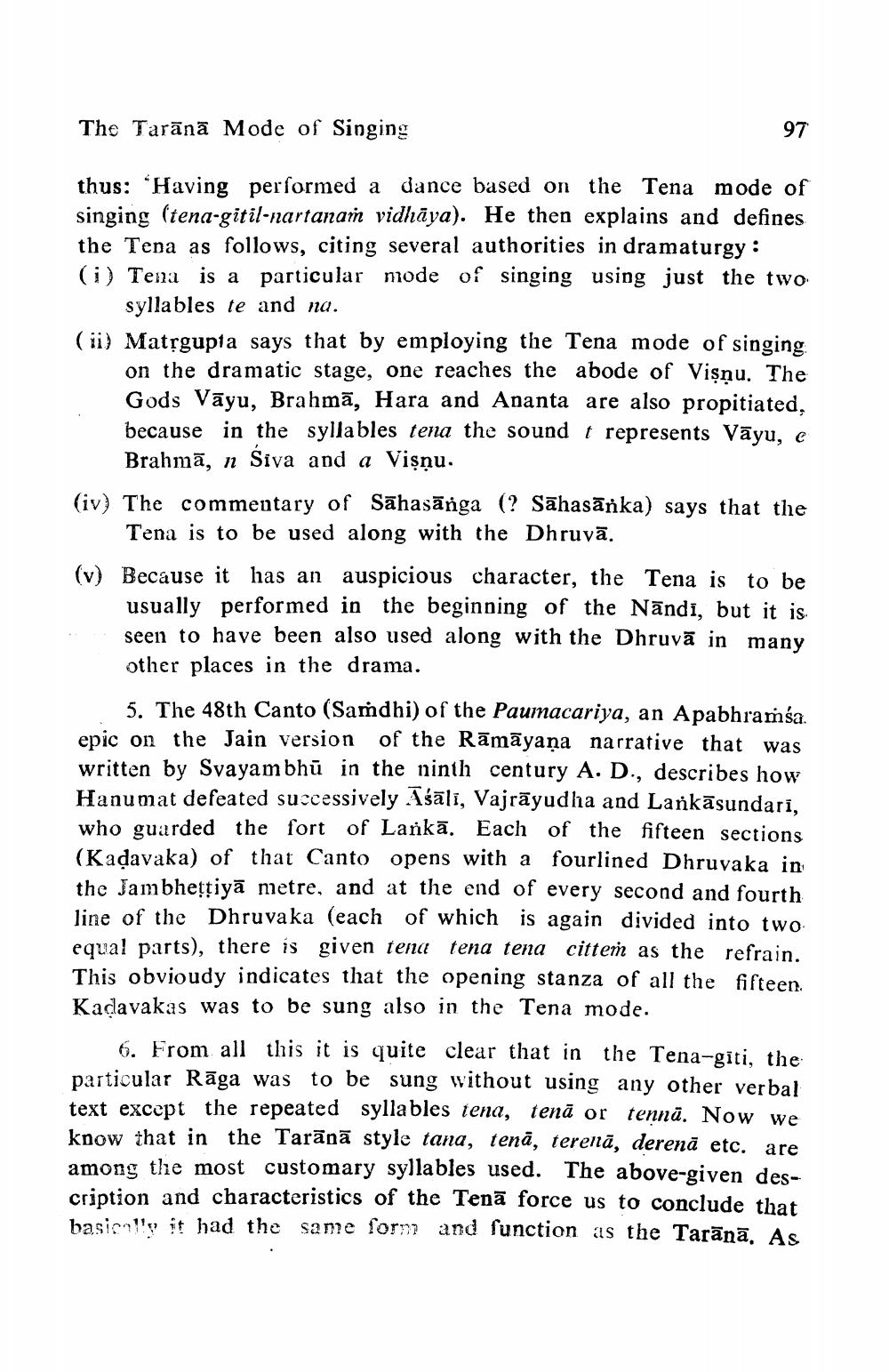________________
The Tarānā Mode of Singing
97
thus: “Having performed a dance based on the Tena mode of singing (tena-gitil-nartanam vidhāya). He then explains and defines the Tena as follows, citing several authorities in dramaturgy: (i) Tena is a particular niode of singing using just
syllables te and na. (ii) Matrgupta says that by employing the Tena mode of singing
on the dramatic stage, one reaches the abode of Vişņu. The Gods Vāyu, Brahmā, Hara and Ananta are also propitiated, because in the syllables tena the sound t represents Vāyu, e
Brahmā, n Siva and a Vişnu. (iv) The commentary of Sāhasānga (? Sāhasāňka) says that the
Tena is to be used along with the Dhruvā. (v) Because it has an auspicious character, the Tena is to be
usually performed in the beginning of the Nāndi, but it is seen to have been also used along with the Dhruvā in many other places in the drama.
5. The 48th Canto (Saṁdhi) of the Paumacariya, an Apabhramśa. epic on the Jain version of the Rāmāyaṇa narrative that was written by Svayam bhū in the ninth century A. D., describes how Hanumat defeated successively Aśāli, Vajrāyudha and Lankāsundari, who guarded the fort of Larkā. Each of the fifteen sections (Kadavaka) of that Canto opens with a fourlined Dhruvaka in the Jambhețțiyā metre, and at the end of every second and fourth line of the Dhruvaka (each of which is again divided into two equal parts), there is given tena tena tena cittem as the refrain. This obvioudy indicates that the opening stanza of all the fifteen. Kadavakas was to be sung also in the Tena mode.
6. From all this it is quite clear that in the Tena-giti, the particular Rāga was to be sung without using any other verbal text except the repeated syllables tena, tenā or tennā. Now we know that in the Tarānā style tana, tenā, terenā, derenā etc. are among the most customary syllables used. The above-given description and characteristics of the Tenā force us to conclude that basic it had the same form and function as the Tarānā. As




